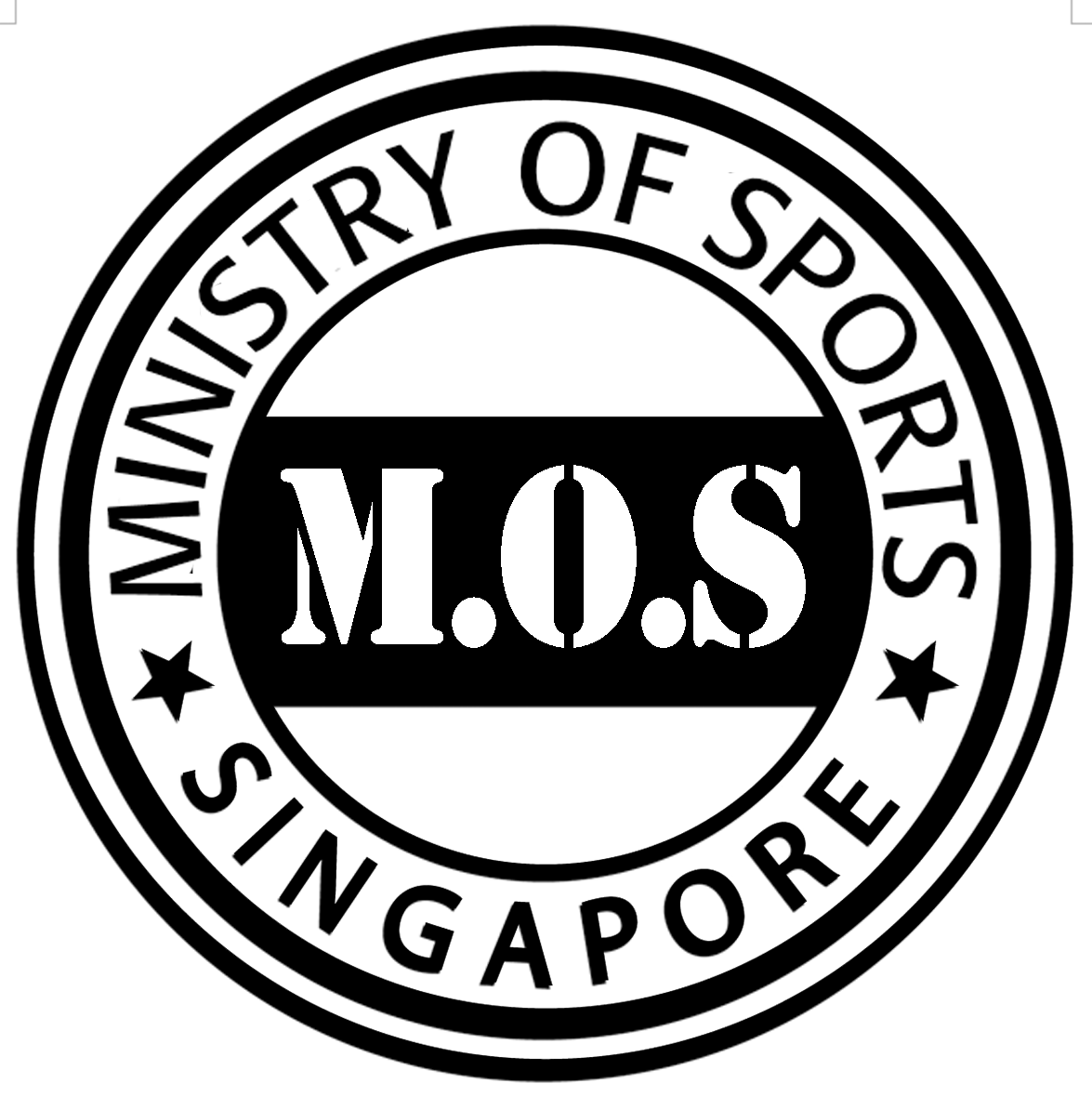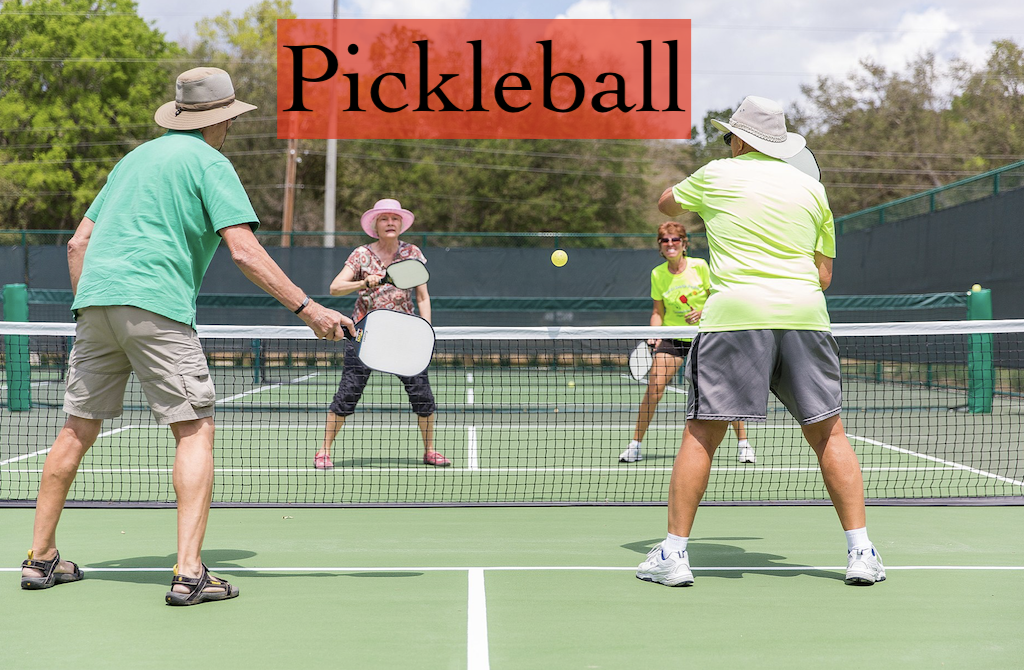Introduction & Pointers: https://en.wikipedia.org/wiki/Pickleball
Pickleball is a paddleball sport (similar to a racquet sport) that combines elements of tennis, badminton, and table tennis.[2] Two or four players use solid paddles made of wood or composite materials to hit a perforated polymer ball, with 26-40 round holes, over a net. The sport shares features of other racquet sports: the dimensions and layout of a badminton court, and a net and rules somewhat similar to tennis, with several modifications. Pickleball was invented in the mid 1960s as a children’s backyard game
Kindly contact us via email info@mof.com.sg or whatsapp (click on below) to tailor make a program for you, your company, club or school. We do that weekly at affordable prices for all groups of people! There are basic and advanced programs, small or larger groups, one-off activities or weekly customized programs etc. etc.
info@ministryoffootball.com.sg
https://api.whatsapp.com/send?phone=6592799006
Contact us at for more information ! The below gives you an idea of what our program will be like!
Course Overview:
-
History of the game.
-
The rules.
-
Technique.
-
“Shadow swing”.
-
Scoring rules)
The game started during the summer of 1965 on Bainbridge Island, Washington, at the home of Joel Pritchard, who later served in Congress and as lieutenant governor.[4] He and two of his friends, Bill Bell and Barney McCallum, returned from golf and found their families bored one Saturday afternoon. They attempted to set up badminton, but no one could find the shuttlecock. They improvised with a Wiffle ball, lowered the badminton net, and fabricated paddles of plywood from a nearby shed.[5][6][7]
McCallum made the first paddles that were specifically for paddleball on his basement bandsaw. He tried several alternative paddles, but one he called “M2” become the paddle of choice for most players.[8] In 1972, McCallum incorporated Pickle-Ball, Inc. and manufactured wooden paddles to help grow the sport. His son David McCallum now runs the business, which is headquartered in Kent, Washington.[9]
Some sources claim that the name “Pickleball” was derived from that of the Pritchard’s family dog, Pickles, or from the term “pickle boat”.[5][7] According to Joan Pritchard, Joel Pritchard’s wife, “The name of the game became Pickle Ball, after I said it reminded me of the Pickle Boat in crew where oarsmen were chosen from the leftovers of other boats. Somehow the idea the name came from our dog Pickles was attached to the naming of the game, but Pickles wasn’t on the scene for two more years. The dog was named for the game, but stories about the name’s origin were funnier thinking the game was named for the dog.”[10]
Court
The pickleball court[11] is similar to a doubles badminton court. The actual size of the court is 20 by 44 feet for both doubles and singles. The net is hung at 36 inches on the ends, and 34 inches at center. The court is striped like a tennis court, with no alleys; but the outer courts, and not the inner courts, are divided in half by service lines. The inner courts are non-volley zones and extend 7 feet from the net on either side.[12]
Play
The ball is served[13] with an underarm stroke so that contact with the ball is made below waist level (waist is defined as the navel level) in an upward arc. The server hits from behind the baseline on one side of the center line and aims diagonally to the opponent’s service court (as in the figure on the right).
Only the serving side may score a point. Play ends for a point when one side commits a fault.[14] Faults include:
- not hitting the serve into the opponent’s diagonal service court
- not hitting the ball beyond the net
- not hitting the ball before the 2nd bounce on one side of the net
- hitting the ball out of bounds
- volleying the ball on the service return
- volleying the ball on the first return by the serving side
- stepping into the non-volley zone (the first seven feet from the net, also known as the ‘kitchen’) in the act of volleying the ball.
A player may enter the non-volley zone to play a ball that bounces and may stay there to play balls that bounce.[12]:A-22 The player must exit the non-volley zone before playing a volley.
The first side scoring 11 points leading by at least two points wins the game. If the two sides are tied at 10 points apiece, the side that goes ahead by two points wins the game.[15]
Tournament games may be played to 11, 15 or 21 points with players rotating sides at 6, 8 or 11 total points respectively.
The server or server and partner usually stay at the baseline until the first return has been hit back and bounced once.
At the beginning of a doubles game before any serving, the score is 0–0. Then the side serving first gets only one fault before their side is out, meaning that their opponents serve next. After the first fault each side gets 2 faults (one for each team member serving) before their side is “out”.
In singles play, each side gets only one fault before a side out and the opponent then serves. The server’s score will always be even (0, 2, 4, 6, 8, 10…) when serving from the right side, and odd (1, 3, 5, 7, 9…) when serving from the left side.[12]:A-15
Para-Pickleball, or wheel chair pickleball, was officially recognized as a competitive branch of Pickleball by the United States of America Pickleball Association in 2016. Rules for those in wheelchairs are similar to the standing rules with minor alternatives. The player’s wheelchair is considered to be part of the player’s body and all applicable rules that usually apply to the body will also apply to the player’s wheelchair. A pickleball player in a wheelchair is allowed two bounces instead of the one a standup player would receive. When a player in a wheelchair is serving the ball, they must be in a stationary position. They are then allowed one push before striking the ball for service. When the player strikes the ball, the wheels of the wheel chair shall not touch any baselines, sidelines, center lines or the extended center or sidelines. When there is a mixed game of those in wheelchairs and those standing, the applicable rules apply for those players respectively. Standing players will adhere to the standing pickleball rules and the wheelchair players will adhere to the wheelchair pickleball rules.[16]
Terminology
- ATP (Around-the-Post): A shot that travels outside the net posts, allowing its trajectory to stay below the height of the net.[16]:46
- Baseline: The line at the back of the pickleball court (22 feet from the net).[12]:A-4
- Centerline: The line bisecting the service courts that extends from the non-volley line to the baseline.[12]:A-4
- Crosscourt: The opponent’s court diagonally opposite a player’s.
- Dink: A dink is a soft shot, made with the paddle face open, and hit so that it just clears the net and drops into the non-volley zone.[12]:52
- Erne: A volley hit near the net by a player positioned outside the court or in the process of leaping outside the court. A legally executed erne shot allows a player to hit the ball closer to the net without stepping in the non-volley zone.
- Fault: An infringement of the rules that ends the rally.[12]:xxii
- Foot fault: Stepping on or into the non-volley zone while volleying a ball, or, while serving, failure to keep both feet behind the baseline with at least one foot in contact with the ground or floor when the paddle contacts the ball.[12]:xxii, 61, A-11
- Half-volley: A type of hit where the player hits the ball immediately after it has bounced in an almost scoop-like fashion.
- Kitchen: The non-volley zone which is seven feet from the net on both sides is commonly referred to as “the kitchen”. Players may not enter the kitchen to return a ball unless the ball first bounces.[16]:37
- Lob: Hitting the ball in a high arc to the back of the opponent’s court. Ideally designed to clear an opponent who has advanced toward the net.
- Net serve: A serve that touches the top of the net and lands in the proper service court (it is replayed without penalty).
- Non-volley zone: A seven-foot area adjacent to the net within which you may not volley the ball. The non-volley zone includes all lines around it.[12]:A-4 Also called the “kitchen”.
- Poach: In doubles, to cross over into your partner’s area to make a play on the ball.
- Rally: Hitting the ball back and forth between opposite teams.
- Serve (service): An underarm lob or drive stroke used to put a ball into play at the beginning of a point.
- Server number: When playing doubles, either “1” or “2”, depending on whether you are the first or second server for your side. This number is appended to the score when it is called, as in “the score is now 4–2, second server”.
- Sideline: The line at the side of the court denoting in- and out-of-bounds.[12]:A-4
- Side-Out: When the serve moves to your opponent’s side.
- Volley: To hit the ball before it touches the ground and bounces.



